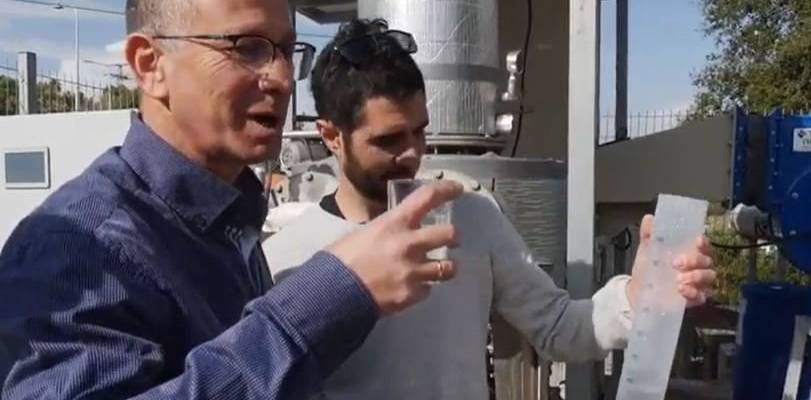Israeli technology is bringing water to desert regions without the use of electricity.
Professors David Broday and Eran Friedler of Technion-Israel Institute of Technology announced last week their groundbreaking energy-efficient system to produce clean water from air. Dubbed “H-to-all,” it is unlike previous “water from air” systems in that it is much more energy efficient and can even be used in arid desert regions.
“Existing technologies work simply as ‘reverse’ air conditioners, by cooling the whole air mass entering the system in order to condense the moisture,” Prof. Friedler explained. “This ‘direct cooling’ approach is energetically inefficient,” unlike existing systems that “waste much of their energy requirements on cooling about 97 percent of the air volume, which is non-condensable.”
Conversely, “The new technology involves cooling of only the moisture that has been extracted from the air, significantly reducing the amount of energy required to produce water.”
The World Health Organization (WHO) estimates that by 2025,13 percent of the world’s population will lack sufficient drinking water. Recognizing this urgency, the United Nations included accessibility to fresh water in its “17 Sustainable Development Goals (SDGs).”
The new Israeli system involves two cyclic stages. First, it absorbs moisture from the air using a highly concentrated saline solution. Then, it separates the moisture from the desiccant and condenses the vapor under sub-atmospheric pressure conditions.
Solar Energy to the Rescue
It also has the advantage of being solar-powered.
“Besides being energy efficient, the new technology offers an additional advantage: as part of the process the water undergoes pollutant removal processes,” Prof. Broday said. “Our technology turns water into a commodity as it enables water to be produced anywhere in the world, without being dependent upon existing sources of liquid water. The prototype we have built demonstrates that the system works as expected.”
Previous systems cooled the entire air mass to generate and then extract the water, requiring a lot of energy. This is because, even in high humidity, only about three percent of air’s total mass is vapor.
“We are not competing with desalination,” Broday said. “Israel is a developed nation situated near the sea and can supply all its water needs through desalination systems.”
He said desalinization works for a small country near the sea, like Israel, where “a significant portion of the population lives along the coast, such that water does not need to be transported over long distances. In contrast, transporting desalinated water to communities situated far from the coast is very expensive due to the need for extremely long pipelines. Herein lies the advantages of the new technology.”
The new system is meant to supply fresh water to isolated communities far from fresh or salty water sources.
“In addition to being an essential component of life, water also influences other important aspects, among them individual and community health and even the empowerment of women,” said Friedler. “In many places, young girls do not attend school because they are busy providing water for the family. Even as adults, women devote hours to transporting water. Furthermore, access to water is a central factor in bloody confrontations in arid regions nowadays, and constitutes one of the foremost motives for immigration. In such conflict zones, the risk of children dying from polluted water is 20 times higher than dying due to violent acts.”
The system is currently being developed into a commercial product.










